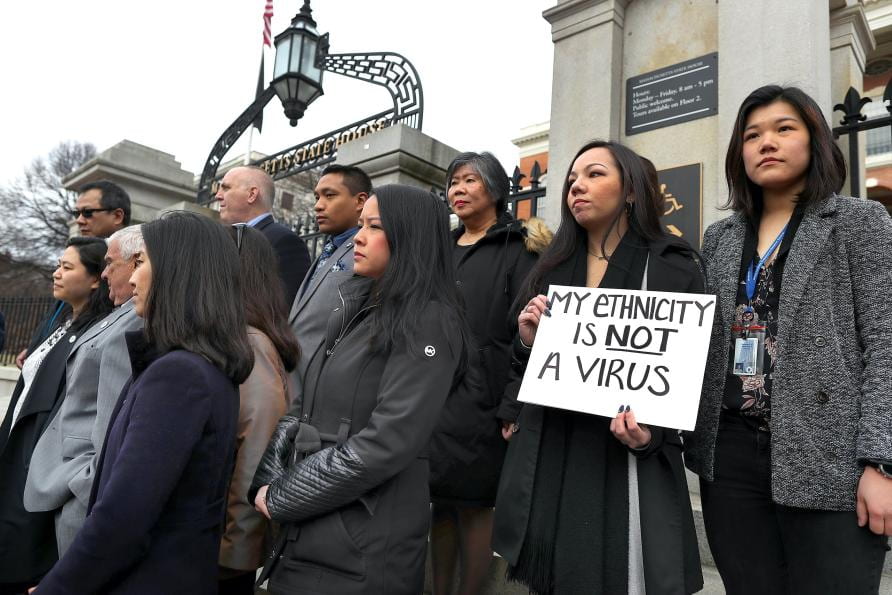In the past year, there has been a drastic rise in hate crimes against Asians across the globe. This was fueled by inflammatory language and anti-Asian rhetoric surrounding the COVID-19 pandemic. Recent hate crimes and acts of discrimination against people of Asian descent are not isolated to the past year. Anti-Asian language and rhetoric is beginning to garner widespread media attention in light of the Atlanta shootings during which six Asian women were killed. It’s incredibly sad and concerning that it took this instance to gain media attention for the injustices that have been plaguing Asian American and Pacific Islander (AAPI) communities. Asian American communities face a unique reality regarding racism and racial violence that’s not often seen in other racialized communities. On one hand, Asians are praised and encouraged to be the perfect minority, and on the other they are still placed in the racial hierarchy that seeks to oppress them via harmful stereotypes and nationalist ideals.
While some of the hate crimes are due to overt racist attitudes, others are due covert cultural stereotypes about Asian Americans that are reinforced in the media and pop culture. These stereotypes present Asians as submissive and hardworking. “People don’t think that Asians will fight back” so they are more easily targeted by others who don’t fear the consequences. As a result, the elders in the Asian community have had to bear this burden of violence. Asian American stereotypes are a direct result of this community being portrayed as the model minority.
What Is the Model Minority Myth?
The model minority term was coined by William Petersen in 1966, a white male who argued that Japanese Americans could not experience racism because they were capitalistically and socially performing better than other groups of color. This is incredibly ironic because of the Japanese concentration camps that were built by the US government during World War II. This model minority myth stereotypes Asians as studious, successful, hardworking, and smart. It is this population that despite being a minority has challenged the odds and accomplished the “American Dream.” Even though this stereotype has seemingly positive overtones, it is especially damaging for Asian Americans and other minorities. The model minority myth pits minorities against each other, while also simultaneous ignoring the systemic racism that plagues Asian Americans. It also takes a huge toll on the mental health of Asian populations, because of this burden to succeed and compete against other minorities in a distinctly white dominated country. Asian Americans that don’t fit this model minority mold, who are of lower socioeconomic status, and work in low-wage industries are more susceptible to experiencing hate crimes and racial violence. Asian women encounter even more difficult odds. Asian women are fetishized, sexualized, and marginalized. Asian women are also in an extremely precarious position and vulnerable to facing violence.

Gregg Orton, national director of the National Council of Asian Pacific Americans, says that there is a narrative that says we are alright, that we don’t have problems and so we should not complain. Rewriting the challenge of this narrative speaks for itself, especially since it emphasizes the type of work that needs to be done to combat this notion and these harmful stereotypes. While not every act of discrimination or crime that takes places against Asian Americans is a hate crime or racially motivated, these repetitive and familiar acts of violence and complacency are certainly something to address.
The model minority myth contributes to the oppression Olympics and damages the unified front that people of color are attempting to uphold against individual and systemic acts of racism. This myth has been weaponized against the Black community and against Asian forms of resistance. Illustrating Asian Americans as the epitome of the “American Dream” damages the lives of Pacific Islanders, Native Hawaiians, and Southeast Asian Americans. Their needs, struggles, and harms they face are made invisible. This does not mean that Asian Americans do not benefit from the oppressive nature of the model minority narrative. This is not an excuse to discount the racial violence and discrimination that the AAPI community faces every day. To move beyond this myth and fight it, there needs to be solidarity between AAPI groups and other marginalized communities. We have already seen this in action in light of the Black Lives Matter protests this past summer and especially this past month.
What can you do to help?
- Donate to these organizations.
Stop AAPI Hate, Asian Americans, Advancing Justice, Welcome to Chinatown, Compassion in Oakland, NextShark, Gold House, Apex for Youth, Asian Mental Health Collective, Dear Asian Youth, Asian American Collective, Hate Is A Virus, AAPI Community Fund, Red Canary, AAPI Women Lead, Asian Americans Advancing Justice – ATL, Asian Feminist Collective, Asian Pacific Environmental Network
- Educate yourself on the racialized history of Asian Americans. There is a hefty history of racism against Asian Americans in the U.S.
- Deconstruct both the overt and covert stereotypes that enforce the model minority model.

